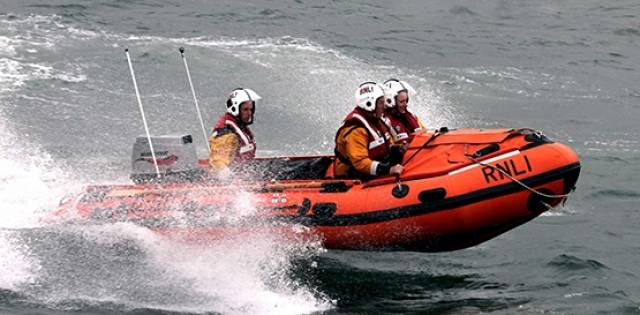In a callout that was virtually identical to one last January, Fethard RNLI was launched this afternoon (Sunday 8 May) to reports of a kitesurfer in difficulty off Duncannon Fort. As with the previous callout the kitesurfer made it ashore safely and was then picked up by the lifeboat’s landrover.
The Fethard lifeboat was launched at 4.20pm when a member of the public raised the alarm after seeing what they thought was a kitesurfer and two windsurfers in trouble near Duncannon Fort. However the two windsurfers were assisting the kitesurfer after he went into the water and was unable to get back up and was struggling. The windsurfers brought him closer to shore but with a strong tide were not able to bring him safely in themselves.
The Fethard lifeboat was en route to Duncannon beach to be launched when the kitesurfer managed to swim to shore himself. He then made his way from the beach inland where he was picked up by the lifeboat landrover. Conditions on the day were calm with good visibility.
Commenting on the callout Fethard RNLI Launching Authority Hugh Burke said, ‘This is the second callout of a similar nature in the last five months and about the sixth in the last three years. The tide in this area is extremely strong and many people are caught out by it, especially when the weather looks fine. The depth of the water shifts quite dramatically and people don’t realise they are on the edge of a major shipping lane. We would urge people to be extremely careful when they are in this area and to take proper safety advice. Thankfully the windsurfers were on hand to give assistance and a vigilant member of the public raised the alarm, however it could have ended very differently.’






























































